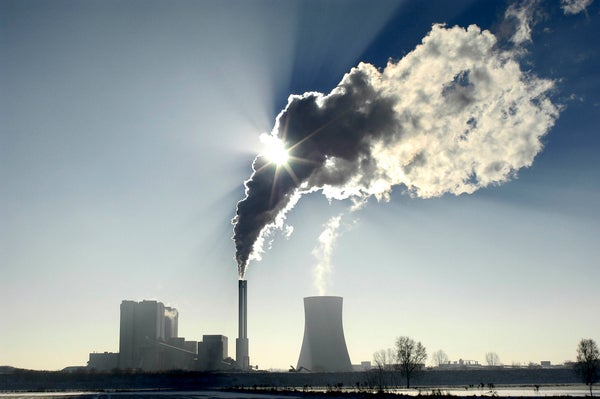Every metric ton of carbon dioxide humans emit comes at a cost—not only in terms of the financial toll of the damage wrought by floods, heat waves and droughts but also the price in human lives. Substantially curtailing emissions today could prevent tens of millions of premature deaths over the course of the 21st century, according to a new study that calculated this “mortality cost of carbon.”
The research, published on Thursday in Nature Communications, breaks out one piece of the social cost of carbon (SCC), a metric that calculates the future damages from carbon emitted today to put a price on those emissions. The SCC helps governments weigh the costs and benefits of climate regulations, mitigation projects and fossil fuel infrastructure. The Biden administration is currently in the midst of revamping the U.S. federal government’s estimate of this metric to include the most recent science on climate impacts, as recommended by a 2017 National Academies of Sciences, Engineering, and Medicine report. Those impacts include expected premature deaths. The Biden administration has temporarily put its SCC estimate at about $51 per metric ton, close to where it was in the Obama years—before the Trump administration slashed it to as little as $1 per ton.
R. Daniel Bressler, a Ph.D. candidate at Columbia University and author of the new study, was interested in looking at how SCC estimates would change if researchers included the most recent science on temperature-related deaths tied to climate change. He also broke out that component separately so that the human toll would be clearer. To do so, Bressler updated a model created by economist William Nordhaus (who won a Nobel prize in economics for that model in 2018). It effectively links various climate scenarios to their economic impacts to calculate the social cost of carbon and determine the optimal plan for reducing emissions. Bressler wanted to tweak the model to make climate-related mortality a bigger contributor to the overall cost of climate change and to incorporate extensive recent research on the matter. “There’s really been an explosion of literature [on the topic] over the last decade or so,” he says.
On supporting science journalism
If you're enjoying this article, consider supporting our award-winning journalism by subscribing. By purchasing a subscription you are helping to ensure the future of impactful stories about the discoveries and ideas shaping our world today.
When Bressler incorporated that newer research, he calculated that—under a scenario in which emissions continue to grow—every 4,434 metric tons of carbon dioxide added to the atmosphere in 2020 would result in one excess death globally by 2100. (For comparison, 3.5 Americans emit that much in their lifetime.) Looking more broadly, one million metric tons of CO2 emitted in 2020—or what 35 commercial planes, 216,000 cars or 115,000 American homes release in a year—would cause 226 premature deaths by the end of the century.
Factoring in those deaths increased the social cost of carbon from $37 to $258 per metric ton, effectively making it much more economically advantageous to reduce emissions now. It also makes rapidly reducing emissions and fully decarbonizing by 2050 more cost-effective, in comparison with the more tapered approach that Nordhaus’s model originally recommended. The result is “quite a big difference in terms of what the suggested climate policy is,” Bressler says. Following a faster emissions reduction path instead of letting emissions continue to grow unabated would reduce premature deaths from about 83 million to nine million by 2100.
Bressler notes that his study has a wide uncertainty range and that the mortality figures only include deaths related to temperature. Ideally, disease transmission, floods and other climate-related impacts should also be factored in, but these elements have less research to draw on. Bressler’s work is similar to what other scientists, including those at the Climate Impact Lab collaboration, are doing to revise the social cost of carbon, says Maureen Cropper, a University of Maryland economist and co-chair of the group that wrote the 2017 National Academies report. Bressler’s estimate of the SCC is much higher than the Climate Impact Lab’s because of various economic assumptions he made, but translating this aspect of the social cost of carbon from more abstract dollar figures is valuable, Cropper adds. “When you put things in terms of people,” she says, “I think it does resonate.”
